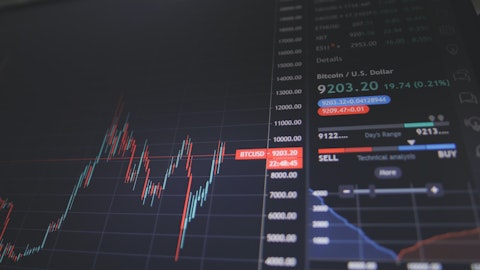While the market is tremendously structurally short, our guidance does not include selling those spot ships at those elevated prices. I just want to start there. The fundamentals of our guidance is on the basis of long-term agreements. They do get adjusted for inflationary adjustments, as we have said. And so you certainly will see that flowing through. Some of our contracts roll off, but some new contracts we will start to deliver against in 2023, and that will drive incremental margin into our business because they are higher priced. As you’ve heard us talk about the contracting environment that we’re in, given the alternatives of the high-priced alternatives of any fossil fuel plus carbon pricing for the — not only today, but also from a future forward curve perspective, we do see a very favorable pricing environment.
We have executed some of these contracts that will flow through our revenue line. Now let’s turn to the cost side. I think the biggest difference you will see comes from improved fixed cost absorption. Why do we have such conviction around that fixed cost absorption is because our plants have proven that they can do it in the later part of 2022. As you’ve heard us say in the past, we commissioned our lose tale plant in 2022, and it is fully ramped. In addition to that, we had very accretive upsizing opportunities over the last year or two in some of our existing plants. They have been completed. And those plans have shown that they have broken through previous bottlenecks to now deliver volumes at an elevated rate. That fixed cost absorption will be a major driver for our conviction in our increased guidance range for 2023.
Other elements that you should also know and we’ve said that in our prepared remarks are certainly very different levels of energy costs that we’re seeing in our business. Many months, we had $9 per MMBtu gas prices in 2022. Currently, we are between 2 million and 3 million per MMBtu with an appropriate hedging strategy in place. That also flows at some of our plants through electricity costs. Diesel costs have come down. That will certainly provide some very substantial and material benefits. All that together — if you add that our plans are fully staffed and that wood costs are coming down we have a high level of conviction that the core of our business, what you’ve always heard us talk about underpinned by long-term agreements and our existing fleet will provide the majority and increased, much increased EBITDA levels for 2023.
Elvira Scotto: Okay. Great. And then I have another one, and then I can come back into the queue. But why are the Epes and Bond plants delayed by six-plus months. And then why is the average cost per plant up? And are these — like are these plants fully contracted so that you have confidence that you’ll still get that 5x EBITDA or better returned?
Shai Even: So, I’ll start with the last question, absolutely. Those — as an example, it’s fully contracted and we’re already benefiting from the inflationary adjustments that we see in our book for existing contracts that have started. Future contracts, of course, don’t start the inflationary adjustments when we start delivering they start their inflationary adjustments when we signed those contracts. So — and on top of that, we’ve certainly been able for future plans to layer on incremental contracts just announced today, 600,000 tons had really very favorable pricing gives me a very high level of confidence that those plants will be on a 5x or better EBITDA multiple and generate the $75 million to $90 million that we have mentioned in our remarks.





